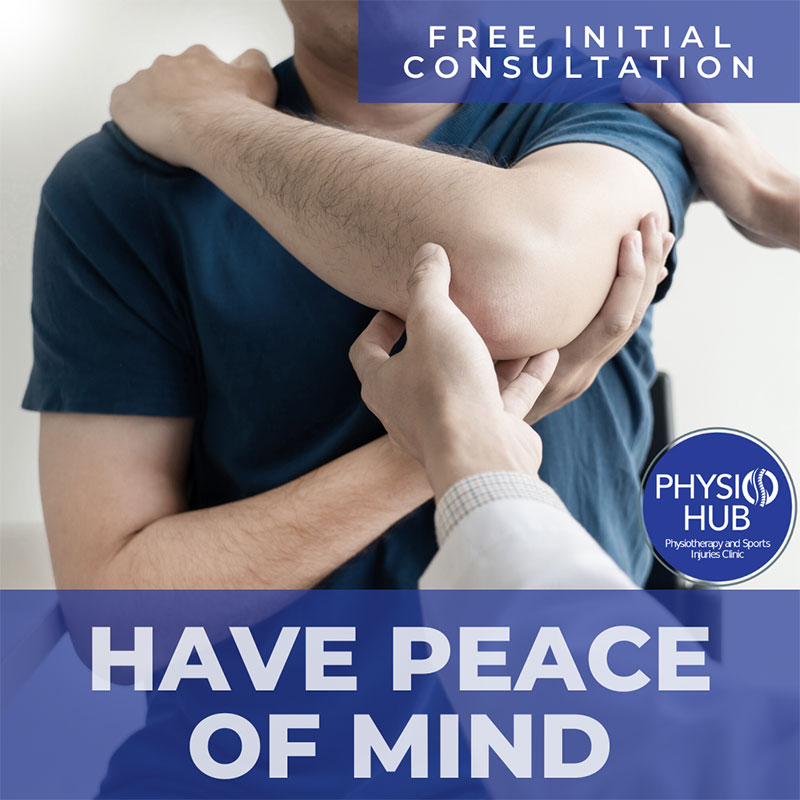Shoulder Pain
Shoulder pain can be quite complex, as the shoulder has 4 different joints. The shoulder is formed where the humerus meets the glenoid socket on the shoulder blade. The shoulder blade then attaches to the rib cage at the back and can move up and down, and side to side as we move our arms. The collar bone will attach to the shoulder joints at the front. The shoulder then acts as a base that which our elbows and arms function.
Cartilage and ligaments work together to stabilise the shoulder. Deeper muscles such as the rotator cuff work to stabilise the shoulder joint too. More powerful muscles can also create a larger range of movements. Sof tissues help to reduce friction in the shoulder. There are many nerves that pass around the shoulder. These nerves travel down the arm to innervate the skin and muscles
Here at Physio Hub, we will conduct a thorough examination of your specific problem and we can conduct physical testings to aid in your diagnosis. We can then create a treatment plan to get your shoulder back up and moving again. If necessary, we may refer you for further testing such as MRI, ultrasound, blood tests, or X-rays.
There are many conditions involved in shoulder pain.
Common conditions can include:
Stiffness in the shoulder
Shoulder impingement
Rotator cuff injuries
Acromioclavicular injuries
Shoulder fractures
Dislocation and instability in the shoulder

FAQ's
Shoulder pain can result from various factors, including rotator cuff injuries, tendonitis, and overuse. If you experience persistent shoulder pain, limited range of motion, or discomfort that interferes with daily activities, it's advisable to seek physiotherapy. Early intervention can help identify the underlying cause and implement targeted treatments to alleviate pain and improve shoulder function.
Yes, poor posture can contribute to shoulder pain by placing strain on the muscles and joints. Physiotherapy can address posture-related issues through targeted exercises that improve muscle balance and promote proper alignment. Additionally, education on ergonomics and daily habits is provided to help individuals maintain better posture in various activities, preventing the recurrence of shoulder pain.
Yes, physiotherapists often prescribe exercises to prevent shoulder pain, especially for individuals involved in repetitive activities or sports. These exercises focus on strengthening the rotator cuff muscles, improving shoulder stability, and promoting overall shoulder health. Physiotherapists work with individuals to design customized exercise routines that address specific needs and reduce the risk of shoulder injuries associated with repetitive motions.
Physiotherapy for shoulder pain involves a comprehensive assessment to determine the specific issues contributing to discomfort. Treatment may include exercises to strengthen the shoulder muscles, manual therapy techniques to improve flexibility, and strategies to correct posture. Sessions are tailored to individual needs, and the physiotherapist may incorporate modalities such as heat or cold therapy. The goal is to reduce pain, enhance mobility, and promote long-term shoulder health.